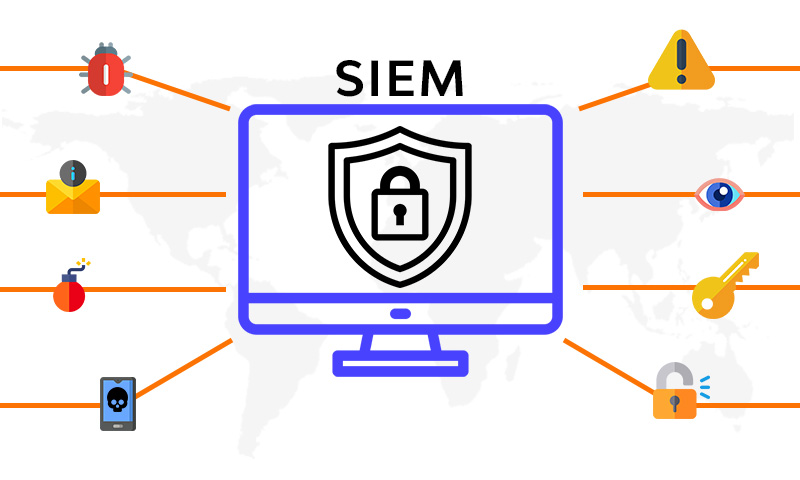Security Information and Event Management (SIEM)
We are cognizant of our customer’s need to analyze event data in real time for early detection of targeted attacks and data breaches, and to collect, store, correlate, investigate and report on log data for automated incident response, forensics and regulatory compliance.
SIEM technology aggregates event data produced by security devices, network infrastructure, systems and applications.
The primary data source is log data, but SIEM technology can also process other forms of data, such as network telemetry.
Event data is combined with contextual information about users, assets, threats and vulnerabilities.
The data may be normalized, so that events, data and contextual information from disparate sources can be analyzed for specific purposes, such as network security event monitoring, user activity monitoring and compliance reporting.
The technology provides real-time analysis of events for security monitoring, query and long-range analytics for historical analysis.

SIEM tools are an important part of the data security ecosystem: they aggregate data from multiple systems and analyze that data to catch abnormal behavior or potential cyberattacks. SIEM tools provide a central place to collect events and alerts – but can be expensive, resource intensive, and customers report that it is often difficult to resolve problems with SIEM data.
What is SIEM?
Security Information and Event Management (SIEM) is a software solution that aggregates and analyzes activity from many different resources across your entire IT infrastructure.
SIEM collects security data from network devices, servers, domain controllers, and more. SIEM stores, normalizes, aggregates, and applies analytics to that data to discover trends, detect threats, and enable organizations to investigate any alerts.
How Does SIEM Work?
SIEM provides two primary capabilities to an Incident Response team:
- Reporting and forensics about security incidents
- Alerts based on analytics that match a certain rule set, indicating a security issue
At its core, SIEM is a data aggregator, search, and reporting system. SIEM gathers immense amounts of data from your entire networked environment, consolidates and makes that data human accessible. With the data categorized and laid out at your fingertips, you can research data security breaches with as much detail as needed.
Security Information and Event Management Capabilities
Gartner identifies three critical capabilities for SIEM (threat detection, investigation and time to respond) — there are other features and functionality that you commonly see in the SIEM market, including:
- Basic security monitoring
- Advanced threat detection
- Forensics & incident response
- Log collection
- Normalization
- Notifications and alerts
- Security incident detection
- Threat response workflow
SIEM in the Enterprise
Some customers have found that they need to maintain two separate SIEM solutions to get the most value for each purpose since the SIEM can be incredibly noisy and resource intensive: they usually prefer one for data security and one for compliance.
Beyond SIEM’s primary use case of logging and log management, enterprises use their SIEM for other purposes. One alternate use case is to help demonstrate compliance for regulations like HIPAA, PCI, SOX, and GDPR.
SIEM tools also aggregate data you can use for capacity management projects. You can track bandwidth and data growth over time to plan for growth and budgeting purposes. In the capacity-planning world, data is key, and understanding your current usage and trends over time allows you to manage growth and avoid large capital expenditures as a reactionary measure versus prevention.
Request more details below..

